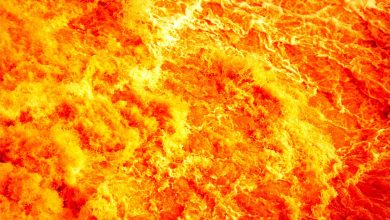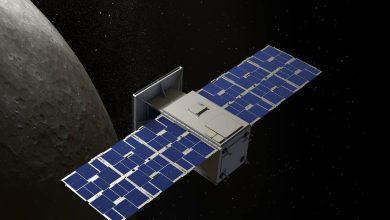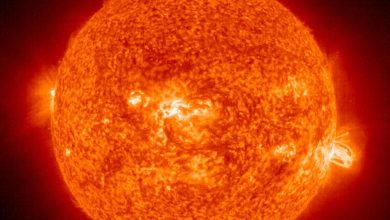Among the thousands of asteroids orbiting the Sun, there is something for everyone. As large as minor planets (Ceres – referred to as a dwarf planet – Pallas and Vesta) or tiny; solitary or accompanied by tiny satellites; solid or simple accumulations of loose fragments. But there’s probably only one that’s accompanied by something resembling a comet, with a 10,000-kilometer (6,213-mile) tail wagging in the solar wind, and which moreover is of man-made origin. , caused by the hand of man.
It was the result of NASA’s DART probe colliding with a small asteroid called Dimorphos. On September 26, the probe, which weighs 600 kilos, struck the satellite of 10 million tons. The size contrast was such that logic would dictate that DART would have little effect on Dimorphos.
But DART was moving at a speed of about 6 kilometers per second, while Dimorphos was moving on Earth in its orbit at about 20 centimeters per second. The collision caused a cataclysm: Colliding with the asteroid in a counter-clockwise direction, the DART impact caused the satellite to slow slightly, causing it to move to a lower orbit and a reduction in its orbital timeline by just over a minute. The exact degree of disruption to Dimorphos’ trajectory around its binary asteroid, Didymos, remains to be determined via a network of giant telescopes and radars. NASA has scheduled a press conference on October 11 where more data will be provided.
Dimorphos does not appear to be a compact body, but rather a mountain of rubble held loosely by its own gravity. One theory suggests that it was formed from debris expelled by its older companion, Didymos. The largest asteroid, about 780 meters in diameter, is shaped like a spinning top with a large bulge at its equator, possibly due to the speed at which it spins. Over millions of years, small fragments could have been ejected into space; some of them would have formed an unstable orbit around the larger satellite and over time would have collapsed to form what is now Dimorphos.
Our last message was Monday’s sightings of debris from the #DART impact on Didymos. Courtesy of @WesternU‘s Rob Weryk, this gif is last night’s sightings with MegaCam. Rob and Richard Wainscoat of @UHIfA plan continued observations of the asteroid. pic.twitter.com/2JwWaIaAWd
— CFHT (@CFHTelescope) September 28, 2022
The Didymos-Dimorphos binary system remains barely maintained by the effect of mutual gravity. Dimorphos orbits just over a kilometer above the surface of its primary. Seen first-hand, every pass it makes – once every 12 hours or so – must be a strange but majestic sight: a flying mountain crossing a landscape of rocks and rubble.
Images relayed to Earth by DART’s in-flight cameras show that none of the asteroids have many plains. Both consist largely of piles of rock without order or structure. There is no regolith – the fine dust that abounds on the Moon and other celestial bodies. With their extremely low gravity, the slightest touch would be enough to launch chunks of rock into space.
DART’s impact wasn’t exactly a tickle. The collision caused tens of tons of ore to be ejected into space, forming a halo around Dimorphos. A crater measuring perhaps a hundred meters in diameter will have been dug into the asteroid. The energy generated by the collision is estimated to be roughly equivalent to detonating more than two and a half tons of dynamite: not as powerful as a small atomic bomb, but sufficient to shake the entire satellite and change its profile, honor of its name: Dimorphos means “two forms”.
Another result of the experiment is less obvious: Dimorphos always presents the same face to its companion asteroid, as the Moon does to the Earth. It is the result of the tidal forces exerted by one on the other. Almost all the satellites of the solar system are in the same situation. But it is likely that the impact of DART, coupled with other more subtle effects, will have upset this balance. Dimorphos can now wobble in what is called “chaotic motion”, i.e. in an unpredictable way. It is not very common, but it has been observed in other cases, notably that of Hyperion, one of the moons of Saturn; Nereid, the third largest satellite of Neptune, and almost all of the smaller bodies orbiting Pluto.
What will happen to matter expelled into space? Initially, as if it were a jet from a rocket, it must have contributed in part to slowing down Dimorphos. When caught in a vacuum, the small satellite’s gravity is so weak that it would take days or even weeks for material to fall to its surface. The majority of them will remain floating in space, accompanying Dimorphos in its orbit. Didymos’ gravitational pull is also not strong enough to pull debris towards it, or for it to form a ring around the larger asteroid, which would be a nice sight, but the laws of celestial mechanics are quite rigid on this point.
Once in the vacuum, the material expelled is subjected to other celestial forces. The most important of these is the radiation pressure and the wind of subatomic particles emanating from the Sun. Both are responsible for the formation of comet tails, which can measure millions of kilometers in length. Some tails are formed by weak plasma and these always extend in the direction away from the Sun; others are made up of low-inertia dust particles torn from the cometary nucleus which therefore tend to follow somewhat curved trajectories.
In the case of Dimorphos, its debris tail is already under pressure from solar radiation. It stretches for about 10,000 kilometers until it finally dissolves into the void. As it stands, Didymos is the only known asteroid in all of space that can boast of having a small “comet” orbiting it.
#NASA #DART #probe #creates #artificial #comet #target #asteroid #Dimorphos





